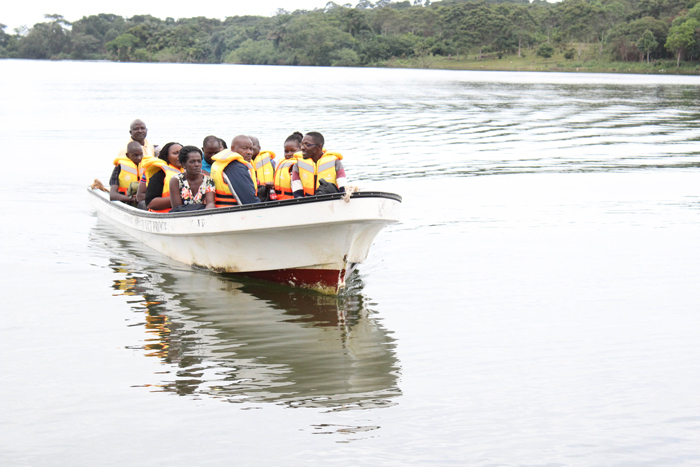Vessel to assist Kalangala health service delivery
The district has 11 health facilities, Kalangala health Centre IV as the main health facility, 6 health centre IIIs and two health centre IIs but has no hospital and ambulance to transport patients to referral hospitals.
Bitijuma Nasuuna a Person living with HIV/AIDs and a bar attendant on Buyovu Island tells a story of how she missed taking her ARVS for three weeks due to the failure of medical teams to access her village.
A team from Kalangala Health Centre IV usually delivers the ARVs every month. However, for a month, they did not deliver the drugs, saying the lake was turbulent, making it hard to reach Buyovu.
Buyovu Island is about 18km away from Kalangala Health Centre IV, which is the biggest health facility in the district.
"My health had deteriorated, but the team resumed supply after nearly 21 days," she says.
"The clinical officers said the reason they were not coming was because of strong water waves that would not allow the smooth sail to the islands," she adds.
Nasuuna is one of the over 6,000 people living with HIV/AIDS on the Islands, who missed their routine antiretroviral therapy.

US ambassador Deborah Malac at the event
Kalangala posts one of the highest HIV prevalence rates in the country at 18 percent.
The district has 11 health facilities, Kalangala health Centre IV as the main health facility, 6 health centre IIIs and two health centre IIs but has no hospital and ambulance to transport patients to referral hospitals.
Kalangala Health centre IV and Bukasa health Centre IV use boats made of timber to supply medical facilities on the 84 islands.
According to Joseph Kagai, the executive director Rakai Health Sciences Program, (RHSP) transport has been the greatest challenge towards HIV service delivery across the district.
"The boats that medical personnel have been using are very slow and not safe," he says.
The cries of the community have been answered by the donation of a vessel by the US. The vessel, worth sh720m is funded by the US Government through Centres for Disease Control and Prevention (CDC).
"With the new vessel, more people will be reached and tested as well as those that need to start on the treatment will be easily identified," Kagai says.
He says the boat will also enable medical teams to reach very many Islands in the shortest time possible for it will work as an ambulance across the Islands.
At the handover of the vessel, America's ambassador to Uganda, Deborah Malac, said the boat will assist the communities.
He highlighted the challenges of the community such as long distances between health centres, tough weather conditions, inadequate human resources, high rates of transactional sex as well as immobility of the population, saying a combination of these makes prompt health service delivery difficult.

The canoes used at the lake
What is it in for the vessel?
According to Hilary Bitakaramire, the Kalangala District Health Officer, it has been hard to reach over 5,000 people using the locally made canoes.
"The vessel will help us to improve the HIV/AIDs programming across the Islands though enabling easy movement of Commodities relevant to HIV services," he says. He adds that it will also help in intensified mentorship and supervision activities for hard to reach facilities and communities as it brings ARVS services to communities that need them," he said